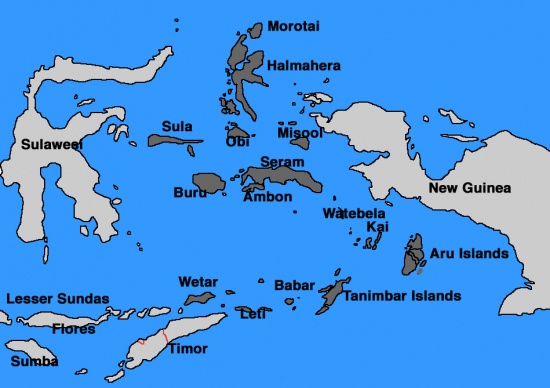m |
m (typo) |
||
| Line 25: | Line 25: | ||
:*Sula | :*Sula | ||
:*Tidore | :*Tidore | ||
| − | They lie in Wallacea, the biogeographical | + | They lie in Wallacea, the biogeographical area between [[Asia]] and [[Australia]]. Their avifauna is more Australiasian than Asian and families like [[:Category:Paradisaeidae|Birds-of-paradise]], [[:Category:Meliphagidae|Honeyeaters]] or [[:Category:Pachycephalidae|Whistlers]] are represented by many endemic species.<br /> |
The logging of rainforest for timber and the growing populations of the islands are a big threat to the future of many species. | The logging of rainforest for timber and the growing populations of the islands are a big threat to the future of many species. | ||
[[Category:Indonesia]] [[Category:Locations]] [[Category:Missing Location Images]] | [[Category:Indonesia]] [[Category:Locations]] [[Category:Missing Location Images]] | ||
Revision as of 17:55, 11 October 2010

The Moluccas are a group of islands in Indonesia.
They are situated west of New Guinea, northwest of Australia, east of Sulawesi and the Lesser Sundas.
Politically the form two Indonesian provinces:
- Maluku
- Ambon
- Aru
- Babar
- Banda
- Buru
- Kai
- Kisar
- Leti
- Seram
- Tanimbar
- Wetar
- North Maluku
- Ternate
- Bacan
- Halmahera
- Morotai
- Obi
- Sula
- Tidore
They lie in Wallacea, the biogeographical area between Asia and Australia. Their avifauna is more Australiasian than Asian and families like Birds-of-paradise, Honeyeaters or Whistlers are represented by many endemic species.
The logging of rainforest for timber and the growing populations of the islands are a big threat to the future of many species.



